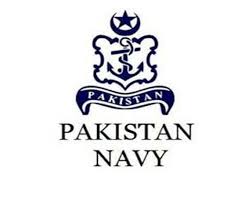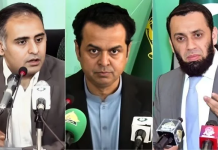Sohail A. Azmie
Charting an uncertain course of its progression from 1947, Pakistan Navy rightly deserves the title of an organization that ‘never looked back’. Though smaller in size among the three military services, the Navy never appeared to be smaller in carrying the burden of national security. Over the past 73 years of its existence, the characteristic that conspicuously distinguished the Navy from other services was its pursuit of ‘transformational continuity’, i.e., consistent capacity enhancement and capability development vis-à-vis challenges and national responsibilities. Beginning with off shore and coastal operations, Pakistan Navy’s operational reach now extends across the Indian Ocean as a ‘norm’. Pakistan naval vessels remain on station (e.g., RMSP) for months without having the need to visit a port or depend on foreign ships for fuel and supplies. Gulf of Oman and Gulf of Aden are now Pakistan’s very own maritime neighborhoods where Pakistan Navy routinely operates. However, reaching to such an operational prowess is a journey that was replete with challenges and formidable tests, which this article intends dwelling upon. The article is an edited version of the one published in the Nationlast year.
Starting its operational voyage with 2 frigates and 4 minesweepers, in 1947, Pakistan Navycame of age to become a reckonable naval force in the region. Unfair distribution of naval platforms at the time of partition had left the Navy in an extremely difficult position to start its capability development. Much of the warfighting, training and logistics infrastructure was retained by India, in clear contradiction to proposals of Armed Forces Reconstitution Committee, established under General Auchinleck. The Committee decided to distribute naval assets between India and Pakistan with a 2:1 ratio. The final distribution that actually took place was way too off this mark, somewhere close to 5:1 in favour of India. This unjustified allocation of naval hardware and personnel would have meant Pakistan Navy to begin everything from scratch.
Unperturbed by the ‘partition/distribution shock’, the Navy began its infrastructure development from 1950s with the setting up of Dockyard and naval training schools in Karachi. Acknowledging the deep impact of undersea warfare during WW II, Pakistan Navy’s leadership decided in 1950s to acquire submarines. The submarine acquisition program commenced with efforts to get British or Swedish submarines, nonetheless it wasn’t until the Navy was successful in acquiring a Tench Class US submarine in 1964. Procurement of destroyers and minesweepers had also been in the major acquisition plans of the Navy. Meanwhile, exercises and cruises were held to develop better interoperability of the new Navy with other navies of the world. In 1950, HMPS Sind visited Saudi Arabia, HMPS Tipu Sultan visited Turkey, and HMPS Shamsher visited Indonesia, Australia and New Zealand. Amphibious warfare exercise was conducted in 1951 with the Royal Navy ships; where Pakistan Army’s infantry units landed on Clifton Beach.
Pakistan Navycontinued to traverse its upward development curve but it wasn’t without jolts, blows and surprises. Besides the ‘partition/ distribution shock’, Pakistan Navyhad to sail through someinternal turbulent waters that affected its progress. On the eve of passage of Pakistan’s first constitution in 1956, the Navy’s seniority was relegated to the second spot behind Army, signifying the governmental focus it would get for the time to come. Necessary funds, needed for the Navy’s growth, were hard to come by in early to mid-50s. At that time it had largely been assumed that the sea hadn’t figured significantly in economic and national security of the country because of a long land border with India and agrarian-based economy. This gave rise to what may now be termed as ‘land-locked thinking’ or the ‘continental mindset’. Some authors prefer to use the term ‘Sea Blindness’, which reflects a condition where importance of the seas is grossly ignored because of lack of maritime awareness. In the same vein, the sea blindness could also overshadow the role of the Navy it plays at military and diplomatic levels.
Steadily, as it appeared, the Navy didn’t lose sight of its foundational ideal of ‘transformational continuity’ and kept consolidating from every available resource that it could muster to become a dependable military force. This track can be seen through four ‘points of inflection’ that immensely impacted the Navy’s outlook, both in size and doctrine. The first of these points of inflection is Pakistan’s joining of SEATO and CENTO, during the Cold War, which afforded the Navy to have American vessels and weapons. This event heralded a new era where Pakistan Navyhad a superior edge over India in anti-ship and self-defence weapons. Induction of Garcia and Brooke classes of frigates, in 1989, enabled the Navy to maintain a strong surface anti-submarine warfare capability that considerably deterred the Indian subsurface combatants to ingress into Pakistan waters.
The second point of inflection, on the development curve of the Navy, occurred when it had to return the Brooke and Garcia frigates to the United States upon expiry of lease (5 years from 1989 to 1994) because Pakistan’s request to turn the lease into acquisition was declined by the Bush government. Though this made Pakistan Navy, somewhat, paralyzed without a credible surface platform to operate freely in the Indian Ocean, but it had left a deep mark on Pakistan Navy’s strategic thinking that now predicated on platform diversification and lessening of dependence on the United States. Subsequently, T-21 frigates from the Royal Navy, Agosta 90B submarines and Eridan class minehunters from France were procured in quick succession to fill the capability void created by the departure of the US-origin platforms. Royal Navy’s T-21 frigates brought a ‘sea change’ in Pakistan Navy’s operational culture and operational contours. Induction of ships not only helped the Navy sustain its national security commitments, but significantly transform the professional military education, operational sea training and branch structure of the Navy. These changes that occurred in mid-1990s continue to affect Navy’s forward-looking thought.
Post-9/11 environment brought the third point of inflection in the Navy’s evolution, which considerably altered the core concepts of its operational endurance and its capacity to undertake maritime security operations. The United States’ reorientation towards Indian Ocean afforded Pakistan Navyan opportunity to join and lead the multilateral naval coalitions operating in the Arabian Sea. This enhanced the Navy’s interoperability to operate together with numerous regional and extra-regional navies that tremendously raised Pakistan’s image and increased its professional capacity to plan and execute myriad operations across the spectrum of conflict. Pakistan Navylearnt to adapt to what may be termed ‘operational transition’, i.e., the ability to seamlessly switch from one role to another across the domains of conventional war-fighting, humanitarian assistance operations and anti-sub conventional warfare.
Post-2017 presents the fourth point of inflection, where Pakistan Navyre-evaluated its strategic priorities and embarked upon independent initiative for maritime security under the concepts outlined in its doctrinal documents. Release of ‘Maritime Doctrine of Pakistan (MDP)’, Naval Chief’s ‘Navy’s Strategic Vision’ paper and commencement of Regional Maritime Security Patrols (RMSP) reflect the outlook of a modern Pakistan Navy, which has the right disposition to radiate influence over regional maritime matters. Induction of 8 new Hangor class submarines, 4 Type-054A destroyers, 4 land attack capable off-shore patrol vessels, 6 Milgem class frigates and Embraer jet Long Range Maritime Patrol aircraft are just a few indicators of the combat lethality that the Navy seeks. The extensive expansion in Pakistan Marines and their associated infrastructure is indicative of the level of preparedness for thwarting enemy’s current or emerging amphibious and grey-zone warfare designs. Implementation of Coastal Security and Harbour Defence organization besides institution of Task Force-88 (joint maritime task force against maritime hybrid threats) would mean Pakistan’s coast has a structured defence against elements conspiring to harm Pakistan’s maritime interests. Pakistan Navy’s massive efforts to uplift social life in the coastal areas have been exceedingly noticeable. Through provision of education, healthcare and other communal services, the Navy has extensively helped poor families dwelling along the coast.
The Navy, through RMSP, argues for a maritime security architecture, which is ‘region-owned and region-led’ ensuring freedom to conduct maritime commerce in the Indian Ocean, particularly in the North Arabian Sea. This is in sync with the foundational maritime concepts presented in MDP, launched in 2018, the cornerstone of which is “preserving freedom of the seas”. Pakistan Navy celebrates the 73rdyear of its existence, where it might need to recall the spirit once proclaimed by Muhammad Ali Jinnah, in his address at the Naval Academy, in March 1948, “the Dominion of Pakistan has come into being and with it a new Navy has been born. I am proud to have been appointed to command it and serve with you at this time. In the coming months, it will be my duty and yours to build up our Navy into a happy and efficient force.”
Pakistan Navystood the test of time during the two wars with India. Seeking an offensive edge, in 1965 war, over a numerically superior adversary, the Navy successfully launched Operation Somnath that ended in a dramatic neutralization of Dwarka’s important radar station stewardingthe maritime and airspace to eliminate any chances of surprise by Pakistan Navy. In the 1971 war, PNS/M Hangor sank Indian frigate INS Khukri and damaged INS Kirpan, ending the deceitful sense of maritime superiority held by the Indian Navy. PNS/M Ghazi, in the same war, checkmated the Indian aircraft carrier for considerable time. It was only after the unfortunate sinking of Ghazi that INS Vikrant was finally able to sail and conduct air operations in the Bay of Bengal.
Pakistan Navy can rightly claim this 14thAugust as a military service that can play its part in pursuance of Pakistan’s strategic and national security interests. With the current naval platforms, near term inductions and long term force goals, Pakistan Navy would continue to represent Pakistan across multilateral forums and security constructs, while independently operating to ensure Pakistan’s commerce remains uninterrupted. The Navy’s enormous contribution in coastal areas social development programs is one of the most notable initiatives by any military service of Pakistan. Having rightly configured platforms and current capabilities, the Navy is duly able to undertake operations from nation protection to nation building, impeccably.

















